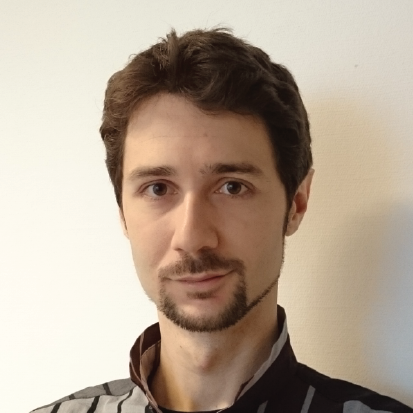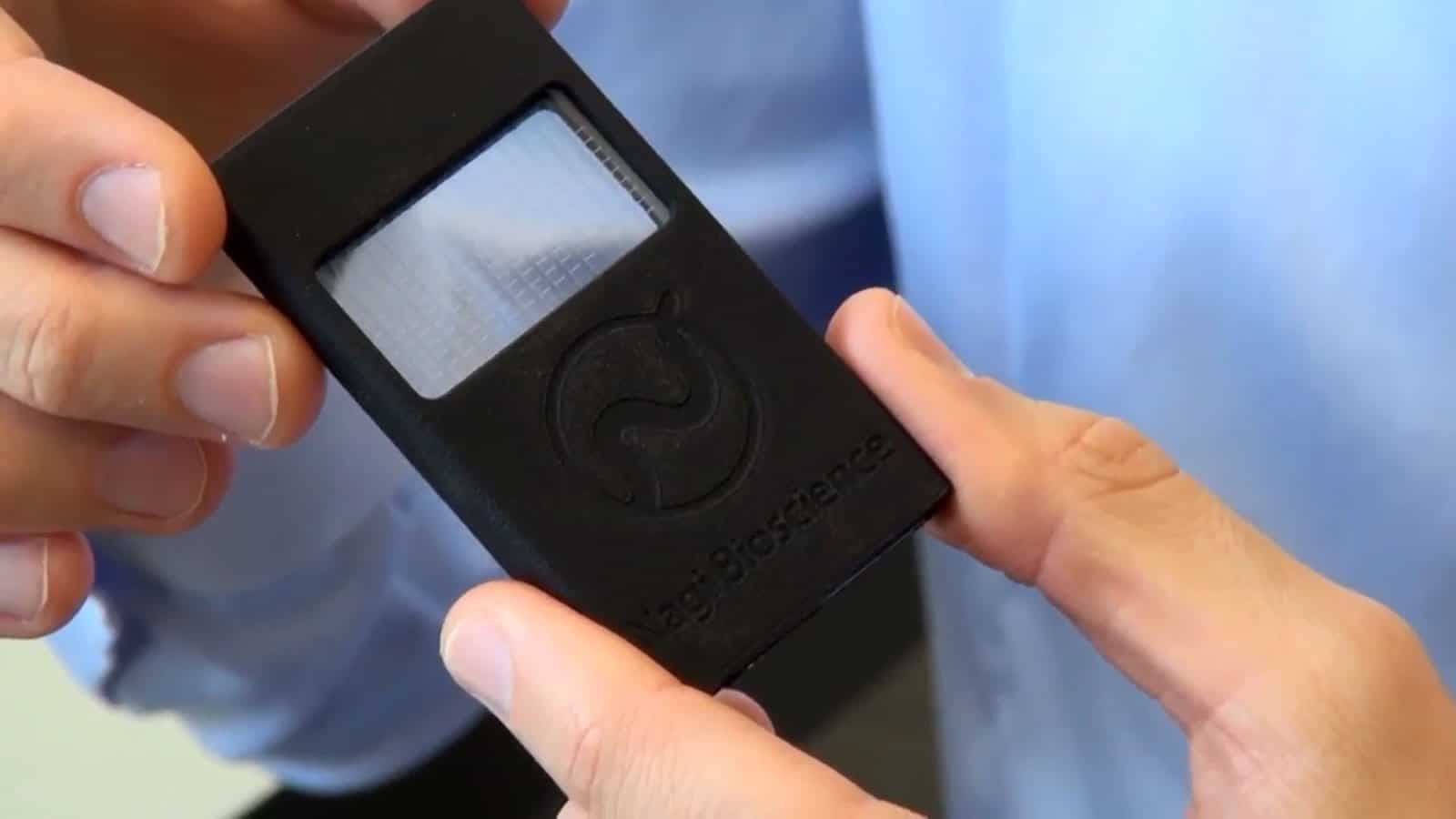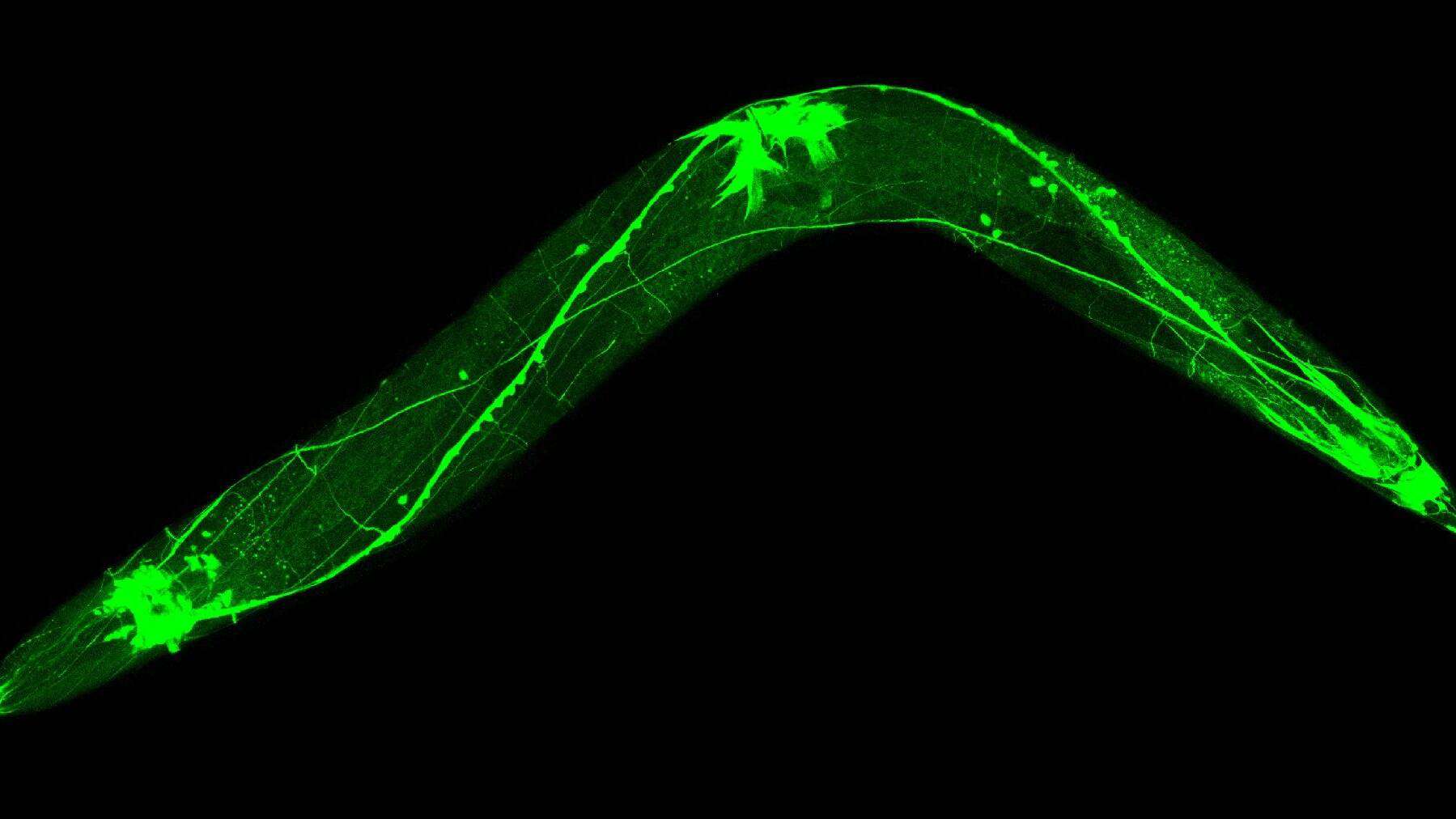Governments and companies around the world invest heavily in non-animal testing systems that provide insights into the harmfulness of chemicals and diseases affecting humans. Startup Nagi Bioscience will soon start commercializing an automated device that promises to speed up science. In this interview, co-founder Matteo Cornaglia explains how it works.

CEO and co-founder, Nagi Bioscience
Matteo Cornaglia founded Nagi Bioscience together with Laurent Mouchiroud in January 2019. The company was recently awarded a EUR 2.5m grant from the EIC Accelerator. Verve Ventures led Nagi’s Seed round in 2019. Matteo has a Ph.D. in Microsystems and Microelectronics from EPFL.
Animals are used in research and to test the safety of products. This subjects them to pain and often death. The question of whether the advancement of human welfare and new technologies is worth this sacrifice is highly disputed. In 2013, the EU banned animal testing for cosmetic purposes. The directive also states that ultimately, the goal should be to replace animal testing in all industries with alternative methods.
Around the world, governments and companies have invested considerably in developing and adopting so-called New Approach Methodologies (NAMs). These are non-animal testing systems that can still provide insights into toxicity (the harmfulness of a chemical) and disease pathways relevant to humans. Examples of NAMs include in vitro approaches (experiments that use human or other cells) or computer models (in silico) that try to predict the behavior of a chemical in the body based on its structural properties.
The problem is that simplified cellular models struggle to predict the complex reactions of an organism. Furthermore, demand for substance testing is growing – every few seconds, a novel chemical substance is registered. This means that technological solutions that are both highly predictive as well as fast to carry out are sought after.
Nagi Bioscience is a spin-off of EPFL, the Swiss Federal Institute of Technology, one of the most prestigious universities in the world. Nagi has been working since 2019 on its ethical testing method. It uses C. elegans as a biological model. C. elegans is a microscopically small worm that has been studied for over 60 years. South African biologist Sydney Brenner was a pioneer in establishing C. elegans as a model organism and received a Nobel Prize for his work. Around 80% of the genes involved in human diseases are found similar in C. elegans too. However, working with these worms means that a trained scientist needs to sit in front of a microscope and handle the worms one by one. This has proven to be a major bottleneck.
Nagi Bioscience has developed a benchtop device that allows highly automated high-throughput (able to handle a large number of tests) testing using C. elegans. Ultimately, Nagi Bioscience aims to establish its device as one of the leading NAMs that will help to promote science while contributing to the reduction of animal testing.
“Entrepreneurship is a journey of learning.”
You’re an expert in microfluidics, the science of controlling fluids on a small scale. Your co-founder Laurent is an expert on C. elegans. You two now run a company with a dozen of employees and will soon start selling your first-generation device. Academia is a forgiving environment, industry is not. What were your biggest challenges so far?
Entrepreneurship is a journey of learning. We needed to set up an industrial structure and governance of the company that is adequate for a fast-growing startup, and we have done that. Due to the nature of the device we have developed, Nagi’s team is very multidisciplinary. This is both our strength and biggest challenge. We need experts in microtechnology and microfluidics, biology and drug discovery, robotics, and software development including state-of-the-art machine learning. Software is a key value driver of our all-in-one devices. They are now all connected to the cloud and can be remotely monitored. The data from the assays are analyzed in real-time by our algorithms and our database of experimental results is a valuable resource to make predictions on new experiments.
Wait, that device, how does it even work? And how does C. elegans enter it?
It’s a compact device that lab technicians can install on their workbench. Everything is automated, which means that a formerly manual and time-consuming process is done at throughput and standardization levels comparable to in vitro experiments. The machine comes with microfluidic chips which are smaller than a credit card. Microfluidic chips are a set of small chambers and channels cast in a material. The technician fills the chip with C. elegans from a reservoir and puts the chip into the device, as well as the chemicals they want to test. Then, the experiment lasts about a week, a timespan that is linked to the development of the worms, which grow very fast. The experiments measure the impact of the chemicals on the worms’ development, reproduction, movement, and several other parameters with a camera. Thereby, scientists get visual feedback on the impact of the chemicals on the worm. The results, which means the quantification of all the monitored parameters, are available in real-time.
You want to replace animal testing with C. elegans. But is that microscopic worm not also an animal?
Biologically speaking it is an animal, of course. But mice, dogs, or apes, that are used in animal tests today are sentient beings, they have a central nervous system and pain receptors, and the pain they experience is clearly visible, even if they cannot express it with words. C. elegans, however, though a living creature, isn’t sentient in that sense, they do not have a central nervous system.
Prof. Johan Auwerx, who directs the Laboratory for Integrated and Systems Physiology at EPFL, said in an interview that Nagi has the potential to speed up scientific discovery. How is that?
Testing on C. elegans is much faster than on rodents, thanks to its short life cycle of 3 days and lifespan of a couple of weeks. This allows testing biological hypotheses in a full in vivo model in a fraction of the time and cost of traditional animal testing. Moreover, our technology gives access to data that would be simply impossible to get in the early phases of research and discovery of new compounds, e.g. about potential efficacy and toxicity of drug candidates or chemicals at the systemic level or on whole-organism parameters such as reproduction. This has an enormous impact on further reducing R&D delays and reducing the risk and huge costs of failures at later stages of R&D.

Invest in Startups
As one of Europe’s most active venture capital investors, we grant qualified private investors access to top-tier European startups. With investments starting at EUR/CHF 10’000, you can build your own tailored portfolio over time and diversify across stages and sectors.
What kinds of research will profit most from Nagi’s device?
We recently presented our work at longevity congresses and the interest in what we do was overwhelming. C. elegans has historically been used extensively in this area of research and a lot of scientific papers have been published on this topic because of C. elegans’ short lifespan and wide range of well-studied and conserved biological mechanisms with respect to humans. Age-related diseases are very complex to study, and Nagi’s technology can speed up research in this field. Furthermore, there are strains of C. elegans available for research that mimic human neurodegenerative diseases such as Alzheimer’s, Parkinson’s, Huntington’s disease, or ALS. Other applications of our technology that have been validated are developmental and reproductive toxicity testing.
Nagi’s first-generation device will soon be ready. This means that you need to scale up the company and start selling.
Indeed, the whole team is thrilled about this next step. First, we need to get the CE mark for the device, which is the regulatory approval to sell it. This will happen by the end of the year. Then we’ll start commercialization with a priority access program. For practical reasons, there will only be a limited number of first-generation devices available, for which we are about to open pre-order possibilities. We’ll assemble this first batch of machines in-house but for the next generation, we’ll outsource production. Eventually, we’ll build a salesforce for Europe and work with distributors in other regions. We want to make the device available in the US which is just as important as Europe as a market.
Are there many potential customers for this kind of product?
There are tens of thousands of researchers worldwide that already work with C. elegans and have generated a large scientific heritage that makes this model the most well-known organism in science. We offer these users unprecedented performance in terms of automation, the reproducibility of results, and new possibilities unavailable with current techniques. However, thanks to our all-in-one device approach, we can also provide access to C. elegans to labs that haven’t worked with it in the past. This is in line with a general trend for multi-model research and a combination of in vitro, in silico, and in vivo models to answer complex questions. Labs, R&D centers, and contract research organizations increasingly need to work on multiple models and use different technologies to get complementary data. There is a big international push to advance NAMs [New Approach Methodologies] to replace animal tests in toxicology testing in the long term.
What kind of industries need toxicology testing?
Toxicology tests are necessary for the development of new products in many different industries, from agrochemicals to cosmetics, and pharmaceuticals to food companies. Our device is industry-agnostic. We have worked for more than a year to validate one of our assays with one of the leaders of the agrochemical sector, Bayer CropScience, and recently presented the results at the Society of Toxicology’s annual meeting, the top global toxicology conference. We already did a lot of toxicology testing on our machines in-house, because clients needed results. But soon we’ll be able to ship them our machines.
I assume Nagi will need further financing to scale the company in the commercialization phase. What kind of investors are you looking for?
Nagi isn’t really a medtech or biotech company, what we’re looking for is investors with a deep network in the life sciences markets. We could also imagine working with the venture arm of a life science company or longevity-focused venture capital firms. Investors need to bring a startup forward. We’re happy to work with Susanne Schorsch from Verve Ventures – her background at German chemical multinational BASF is exactly the type of investor we’re looking for. She is a board observer and has managed to connect us to high-level industry people that are usually very hard to reach.
What will Nagi look like, say, three years from now?
We’ll be firmly implanted in the European and US life sciences markets with our device. The company will definitely be bigger, but still a very pleasant work environment. We’ll have considerable R&D operations and explore the use of different biological models, we want to keep innovating. Furthermore, we expect regulations to start moving fast in the direction of a complete ban on animal testing over the next years. Thanks to the scientific heritage and our technology, C. elegans will be, more than ever, a crucial part of the new standard of testing.
Written by
WITH US, YOU CANCO-INVEST IN DEEP TECH STARTUPS

Verve's investor network
With annual investments of EUR 60-70 mio, we belong to the top 10% most active startup investors in Europe. We therefore get you into competitive financing rounds alongside other world-class venture capital funds.
We empower you to build your individual portfolio.
More News
16.09.2019
“Startups in Switzerland have great potential”
EPFL is not only one of the best universities in the world, but also a place where promising high-tech startups are created. Verve Ventures has backed a lot of them. We visited Prof. Martin Vetterli, the president of EPFL, in Lausanne and talked about science, technology, and entrepreneurship.
26.08.2019
How worms on a chip replace laboratory mice
A new chemical substance is developed every two seconds. The need for an ethical alternative to animal testing is urgent. Nagi Bioscience from Lausanne has found a solution: a tiny worm that shares 80% of its genes with humans, encased on a chip.
29.07.2019
“The worm is very close to humans”
In this interview, Prof. Johan Auwerx from EPFL tells us how to eat if we want to live longer, what small worms can teach us about Alzheimer and Parkinson, and how the startup Nagi Bioscience removes bottlenecks in scientific research.
Startups,Innovation andVenture Capital
Sign up to receive our weekly newsletter and learn about investing in technologies that are changing the world.




